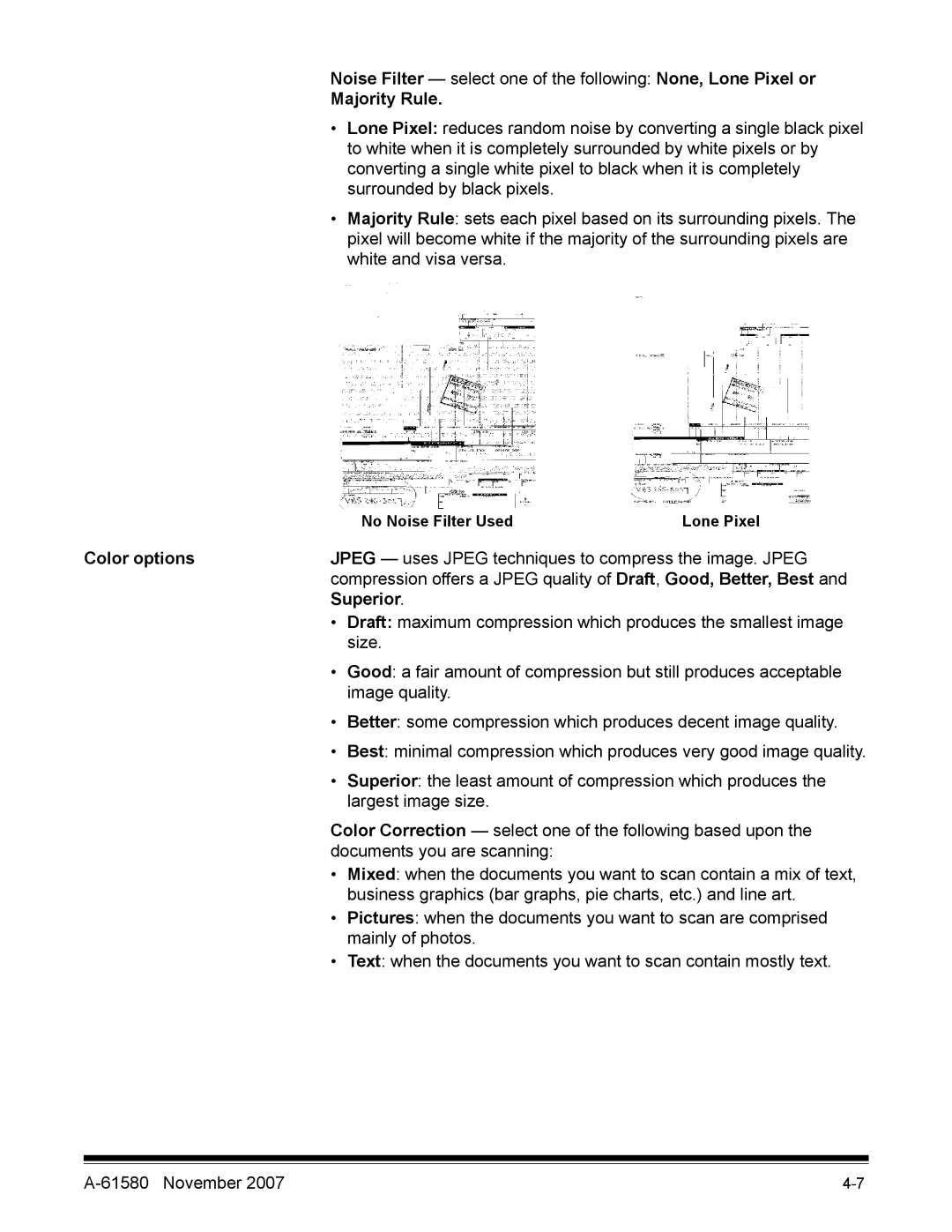
Noise Filter — select one of the following: None, Lone Pixel or
Majority Rule.
•Lone Pixel: reduces random noise by converting a single black pixel to white when it is completely surrounded by white pixels or by converting a single white pixel to black when it is completely surrounded by black pixels.
•Majority Rule: sets each pixel based on its surrounding pixels. The pixel will become white if the majority of the surrounding pixels are white and visa versa.
|
| No Noise Filter Used | Lone Pixel |
Color options | JPEG — uses JPEG techniques to compress the image. JPEG | ||
| compression offers a JPEG quality of Draft, Good, Better, Best and | ||
| Superior. |
| |
| • | Draft: maximum compression which produces the smallest image | |
|
| size. |
|
| • | Good: a fair amount of compression but still produces acceptable | |
|
| image quality. |
|
| • | Better: some compression which produces decent image quality. | |
| • | Best: minimal compression which produces very good image quality. | |
| • | Superior: the least amount of compression which produces the | |
|
| largest image size. |
|
Color Correction — select one of the following based upon the documents you are scanning:
•Mixed: when the documents you want to scan contain a mix of text, business graphics (bar graphs, pie charts, etc.) and line art.
•Pictures: when the documents you want to scan are comprised mainly of photos.
•Text: when the documents you want to scan contain mostly text.
|
